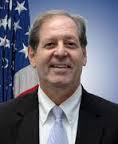
Roots of IT reform starting to take hold
Commerce, USDA, Transportation demonstrate augmented role of CIO to manage significant projects and make much-needed change.
A constant stream of industry pundits and Capitol Hill overseers are calling for evidence of the impact of the Federal IT Acquisition Reform Act (FITARA).
Is it working? Are federal chief information officers taking/being given a real “seat at the table?” Why haven’t the departments of Energy and Labor finished their implementation plans yet?
Too often these and other questions don’t have a direct answer.
But if you listen closely enough to what CIOs are saying, you can see just how FITARA is taking root.
Let’s start with the Commerce Department, where CIO Steve Cooper has to manage two big-dog bureaus: Census and Patent and Trademark Office.
Both have huge budgets: PTO requested almost $600 million in fiscal 2017 for IT alone, and Census requested $1.6 billion, including $778 million for the decennial count, which includes a host of IT initiatives.
Understanding the risk and concerns about the 2020 count, Cooper is working with Census technology executives in a way that’s different than what past CIOs did.
And whether he or anyone admits it, the reason is two-fold: FITARA and, more importantly, the intense scrutiny on the 10-year event.
“We will be the first Census to go to the cloud and not use pencil and paper,” Cooper said at the recent VMWare Public Sector Innovation Summit in Arlington, Virginia. “The framework we are exploring would include a private cloud inside a government community. That way we are sharing the risk with the cloud service provider, who is FedRAMPed.”

Cooper said Census is working with the departments of Justice and Homeland Security and possibly an intelligence agency to ensure the security of its data in the cloud.
“I’m willing to take the risk, but I’m not sure if the Census folks are comfortable that the cloud is properly architected,” he said. “We developed a concept of operations and now the technical folks are taking a deep dive to flesh it out.”
Cooper said he expects Census will finalize its technology decision in the September or October timeframe.
The fact that Cooper is knee-deep with Census planners in how it will use the cloud and how the mobile device enumerators will interact with the cloud is FITARA in action. Whether or not Census or Cooper will say so, the IT reform law has made it easier to have that conversation.
Jonathan Alboum, the Agriculture Department CIO, also is having much-needed tough conversations with the agency’s bureaus.
Alboum said he held an off-site meeting with bureau CIOs last week to discuss how best to consolidate 17 or 18 networks into one.
“What technology can we use to create a simplified environment that is easier to secure and provides better support to agencies?” Alboum said at the VMWare event. “We have about 1,300-to-1,400 locations where people work, and we manage about 7,500 different component parts of a network. The fact is we’ve grown up with limited oversight of some areas so now we have a great opportunity to come together and agree on what the future looks like and that there are benefits for all of us.”
He said the end goal is for bureau CIOs to focus on their agency’s mission, not building systems and running a network.
“We have a great opportunity to approach that from a common way, but it will take a lot of change management and we will have to handle all the soft side things,” Alboum said.
Alboum said he expects to develop a plan by the end of the fiscal year that utilizes the General Services Administration’s Network Services 2020 vehicle to consolidate those disparate networks.
Alboum wouldn’t be the first USDA CIO to try to consolidate networks. Previous CIOs, including Cheryl Cook and Chris Smith have tried to address these same issues. Cook, for instance, led an effort to create a single help desk across the department.
Smith consolidated USDA’s 21 separate email systems in the cloud in 2011.
But where Smith and Cook struggled corralling the bureaus, Alboum has FITARA behind him. He can use the law, which comes with the support of the secretary and deputy secretary, to oversee current and future spending. Many of those pundits are hailing USDA as ahead of the rest of the government with its implementation effort.
Like Cooper, Alboum’s success isn’t dependent on FITARA, but because he has the support from his senior executives and building the cooperation of his bureaus — both of which are the result of the law.
A third example is the Transportation Department where CIO Richard McKinney issued a policy to freeze all future IT investments.
Now McKinney doesn’t see why this policy is such a big deal. I keep asking him about it and I can see the surprise in his face each time.
But the fact is freezing investments until DoT has a better inventory of what technology hardware and software it already owns is a logical step, it just hasn’t been done before. FITARA made it easier than ever before.
In that same vein, DoT also launched two test and development sandboxes as a way to make the freeze a little easier to deal with.
McKinney, also speaking at the VMWare event, said the sandbox resides on two cloud platforms, Amazon Web Services and Microsoft Azure.
“We are having a conversation with the programs and the business units looking for people that have an idea and want a place to play and nurture that idea,” he said. “We are going in the next couple of weeks to set up some challenges and see if we can draw some great ideas out of our business units. We know they have them, but they never had a place to go try their ideas out.”
McKinney also created an electronic white board using a platform called Trello to help the business folks better develop their ideas.
Like Cooper and Alboum, McKinney’s ability to freeze IT spending and create two virtual sandboxes to address shadow IT are not due to FITARA, but because of his increased stature across the agency.
“I have a seat at the table with the secretary at the cabinet level. That seat at the table has allowed me to sit and listen in on the business conversations that take place at the department and understand some of the challenges that the Transportation modes are facing and how they are trying to meet them,” McKinney said. “By having that seat at the table I’ve been able to develop that kind of relationship with the administrators, which also I think strengthens my relationship with the module CIOs. I’ve been trying since I got to DoT to try to develop a culture of collaboration and good communication about technical issues, IT issues and its paid dividends.”
He said one example of how the collaboration is paying off is how the CIO’s office is playing a bigger role in the department’s Smart Cities challenge.
All three of these examples do not scream FITARA. But they do show how change is taking hold. I’m sure more of these examples are out there and it would serve the Office of Management and Budget and the CIO Council well to highlight them more often.
Return to the Reporter’s Notebook
Copyright © 2024 Federal News Network. All rights reserved. This website is not intended for users located within the European Economic Area.
Jason Miller is executive editor of Federal News Network and directs news coverage on the people, policy and programs of the federal government.
Follow @jmillerWFED
Related Stories

Helpdesk award continues USDA’s trek toward more shared services





